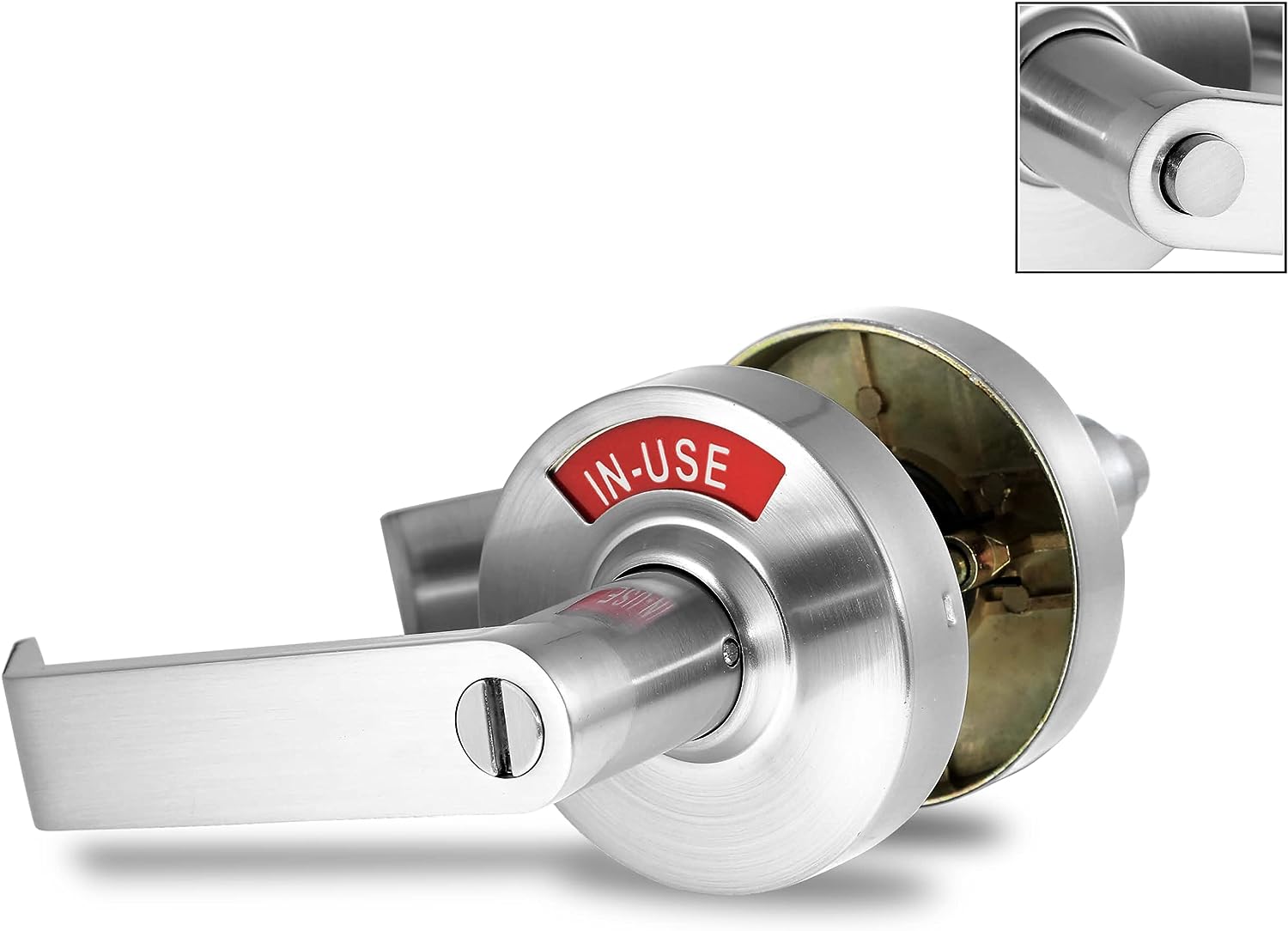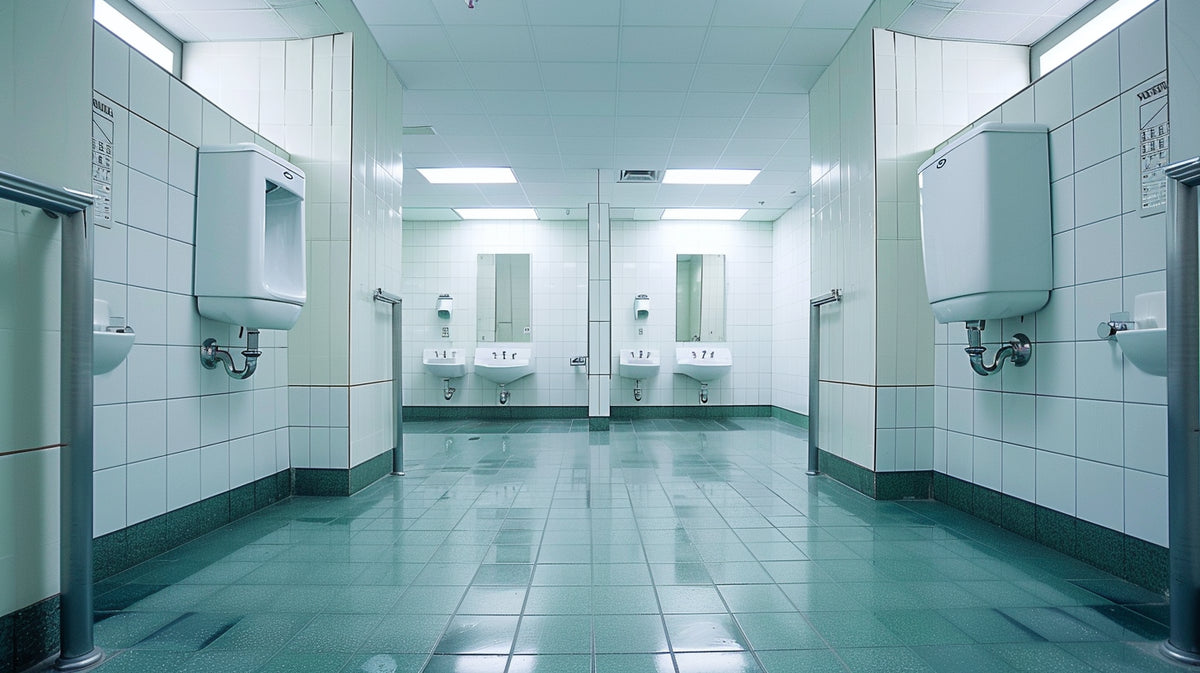In the bustling realm of commercial spaces, the importance of security, privacy, and functionality cannot be overstated. While these aspects are crucial throughout the establishment, they take on a unique significance in a place as intimate as the restroom. Ensuring that your patrons feel secure and respected when using your facilities can significantly enhance their overall experience. But with the myriad of door lock options available in the market, how do you make the right choice for your business's restroom?
Welcome to our comprehensive guide on commercial bathroom door locks. Whether you're setting up a new business space or considering an upgrade for your existing restrooms, this guide is tailored to provide you with an in-depth understanding of the various lock types, their features, and their suitability for high-traffic areas. Dive in to discover the perfect balance between security, durability, and cost-effectiveness for your commercial bathroom needs.
Lever or Knob Lock
A lever or knob lock, as the name suggests, is integrated within the door handle itself. This traditional lock design has been used for decades, blending seamlessly with various interior designs. The mechanism involves a latch that is retracted from inside, usually by turning the handle or knob.

Advantages:
- Affordability: These locks tend to be more budget-friendly.
- Emergency Safety: They are generally safer in emergency situations as they can be easily unlocked from the inside.
- User-Friendly: Simple for users to operate and understand.
Disadvantages:
- Durability: Not the best choice for spaces with high traffic as they may wear out faster.
- Security: Provides basic security but might not be robust enough for areas requiring high security.
Deadbolt Lock
A stalwart of security, the deadbolt lock provides a level of protection that's hard to surpass. Unlike spring bolt locks, deadbolts cannot be moved to the open position except by rotating the key, making them less vulnerable to break-ins. They come in a range of designs from single to double cylinder and even digital variants.

Advantages:
- High Security: Offers superior protection against unauthorized access.
- Durability: Typically lasts longer and withstands heavy use.
- Variety: Comes in different types, allowing businesses to choose according to their specific needs.
Disadvantages:
- Emergency Safety Concerns: In certain situations, especially with double-cylinder locks, exiting might be challenging during emergencies if a key is required.
- Cost: Tends to be pricier than basic knob or lever locks.
Stall Lock
Stall locks are synonymous with public restroom doors. These locks typically feature a slide mechanism or a thumbturn from inside, ensuring quick and easy locking. Designed to offer basic protection and privacy, they are straightforward in their function, making them a staple in many commercial settings.

Advantages:
- Simple Operation: Easy for users to lock and unlock.
- Affordability: Generally more cost-effective than some advanced lock types.
Disadvantages:
- Privacy: Might not offer the highest level of privacy, especially if lacking an indicator sign.
- Durability: Not the most robust option for high-traffic areas.
Indicator Lock
The indicator lock is a step up from the basic stall lock. Integrated with a display sign, it provides immediate visual feedback about the stall's occupancy status, ensuring smooth traffic flow in busy restrooms and minimizing awkward encounters.
Notably, some brands, Vizilok for example, offer both standard and push-button models of indicator locks. This variety allows businesses to choose the perfect lock based on their specific needs and user preferences, ensuring both functionality and user-friendliness. Whether you prefer the traditional turn mechanism or the simplicity of a push-button, there's an indicator lock model to suit your requirements.

Advantages:
- Clear Communication: Helps avoid awkward situations by clearly showing if a stall is vacant/in-use.
- High Security: Especially when combined with other lock mechanisms like deadbolts.
- Privacy: Provides enhanced privacy to users.
Disadvantages:
- Cost: Can be on the pricier side, especially when integrated with advanced locking mechanisms.
Electronic Keypad Lock
A modern solution for enhanced security, electronic keypad locks use a digital interface where users input a specific code for access. They eliminate the need for physical keys, reducing the risks associated with lost or stolen keys. Additionally, codes can be changed regularly to maintain high security levels.

Advantages:
- Enhanced Security: Only those with the code can access.
- No Need for Physical Keys: Reduces the chances of lost or misplaced keys.
Disadvantages:
- Battery Dependency: Might become non-functional if batteries run out.
- Cost: Generally more expensive than traditional locks.
Push-Button Lock
These locks offer simplicity at its best. With just a push of a button from the inside, the door is securely locked. They are especially popular in settings where quick and hassle-free operation is a priority. Their design is minimalistic, yet they offer appropriate security for many commercial restrooms.

Advantages:
- User-Friendly: Extremely easy to operate.
- Cost-Effective: An affordable choice for businesses on a tight budget.
Disadvantages:
- Security: Not the most secure option available.
Comparison of different bathroom door locks types
| Lock Type | Description | Advantages | Disadvantages |
| Lever or Knob Lock | Latch mechanism installed within the lever or knob. |
|
|
| Deadbolt Lock | High-security lock with variants like single-cylinder |
|
|
| Stall Lock | Basic lock with a slide or thumbturn mechanism from inside. |
|
|
| Indicator Lock | Lock with a clear in-use/vacant sign. |
|
|
| Electronic Keypad Lock | Requires a code for access. |
|
|
| Push-Button Lock | Simple push button to lock from inside. |
|
|
In conclusion, choosing the right commercial bathroom door lock depends on your specific business needs, including your budget, desired level of security, and expected traffic. Consider the advantages and disadvantages of each type to ensure you make an informed decision that aligns with your business objectives.



